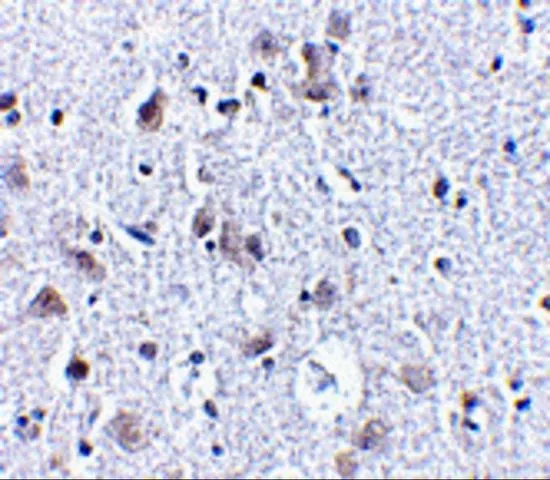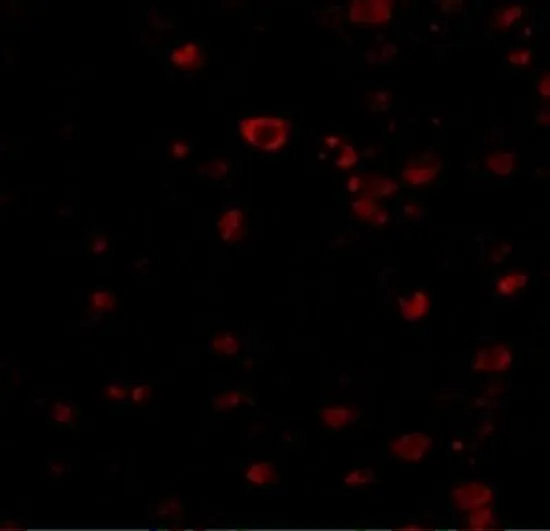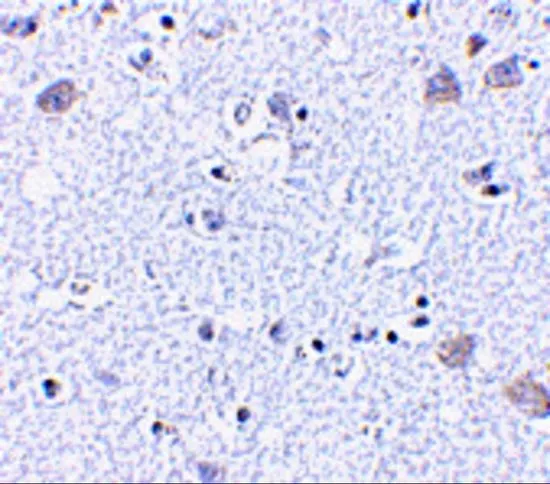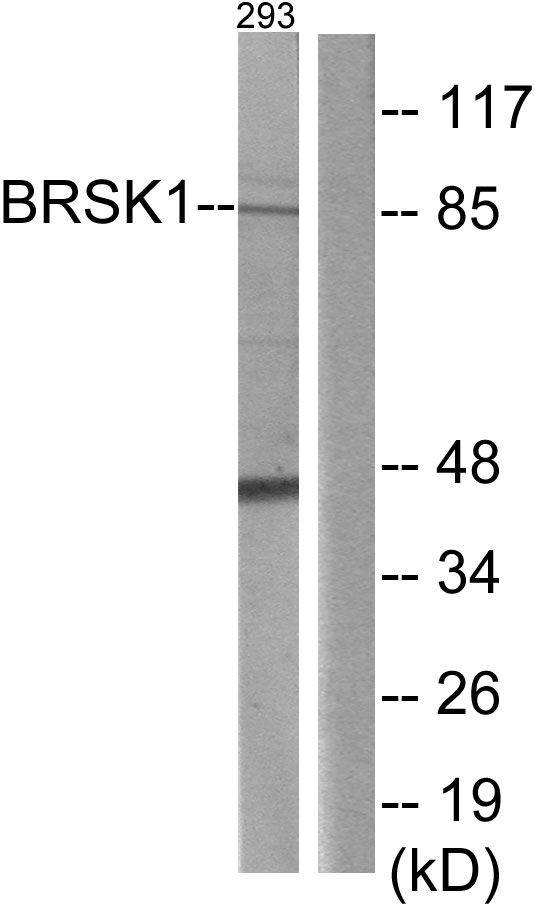
IHC-P analysis of human brain tissue using GTX85055 BRSK1 antibody. Working concentration : 2.5 microg/ml
BRSK1 antibody
GTX85055
ApplicationsImmunoFluorescence, Western Blot, ELISA, ImmunoCytoChemistry, ImmunoHistoChemistry, ImmunoHistoChemistry Paraffin
Product group Antibodies
TargetBRSK1
Overview
- SupplierGeneTex
- Product NameBRSK1 antibody
- Delivery Days Customer9
- Application Supplier NoteWB: 0.5 - 1 microg/mL. IHC-P: 2.5 microg/mL. *Optimal dilutions/concentrations should be determined by the researcher.Not tested in other applications.
- ApplicationsImmunoFluorescence, Western Blot, ELISA, ImmunoCytoChemistry, ImmunoHistoChemistry, ImmunoHistoChemistry Paraffin
- CertificationResearch Use Only
- ClonalityPolyclonal
- Concentration1 mg/ml
- ConjugateUnconjugated
- Gene ID84446
- Target nameBRSK1
- Target descriptionBR serine/threonine kinase 1
- Target synonymsSAD-B, hSAD1, serine/threonine-protein kinase BRSK1, BR serine/threonine-protein kinase 1, SAD1 homolog, SAD1 kinase, brain-selective kinase 1, brain-specific serine/threonine-protein kinase 1, protein kinase SAD1A, serine/threonine-protein kinase SAD-B, synapses of Amphids Defective homolog 1
- HostRabbit
- IsotypeIgG
- Protein IDQ8TDC3
- Protein NameSerine/threonine-protein kinase BRSK1
- Scientific DescriptionBRSK1 was initially identified as a mammalian homolog to the fission yeast S. pombe Cdr2, a mitosis-regulatory kinase and also shows significant homology to the C. elegans neuronal cell polarity regulator SAD1. BRSK1 is unbiquitously expressed, with highest levels of expression in the brain and testes. Similar to its yeast homolog, BRSK1 is thought to be involved in stress-induced cell cycle arrest. Overexpression of this protein leads to the G2/M arrest in HeLa S2 cells and UV-induced G2/M arrest could be partially abrogated by reduced expression of BRSK1 through the use of siRNA, indicating its role in DNA damage checkpoint function. More recently, it has been shown that both BRSK1 and the related protein BRSK2 are required for mammalian neuronal polarization. While BRSK1- and BRSK2- mice were viable, double-mutant mice died within two hours of birth. Neurons from these mice showed uniformly-sized neurites as opposed to the normal long axon and multiple shorter dendrites. These neurites also displayed both axonal and dendritic markers. At least two isoforms of BRSK1 are known to exist.
- Storage Instruction-20°C or -80°C,2°C to 8°C
- UNSPSC12352203









